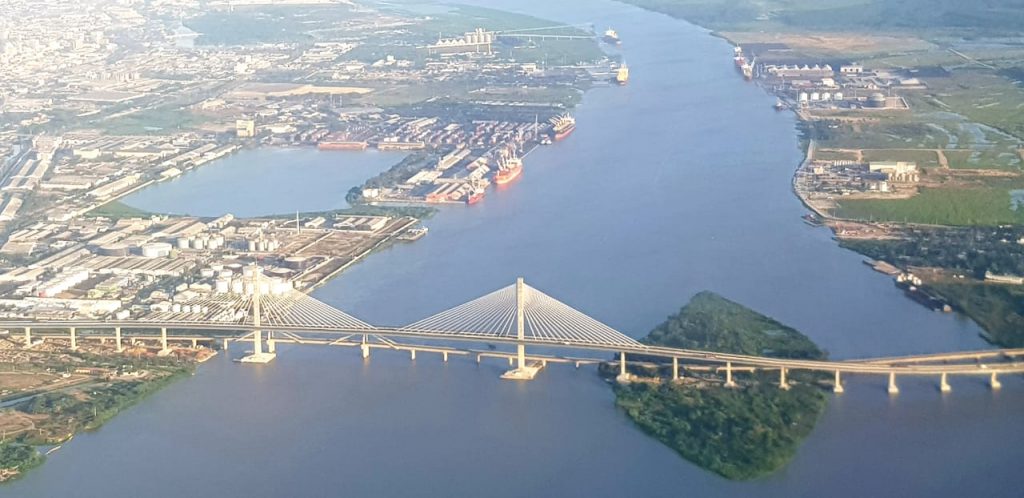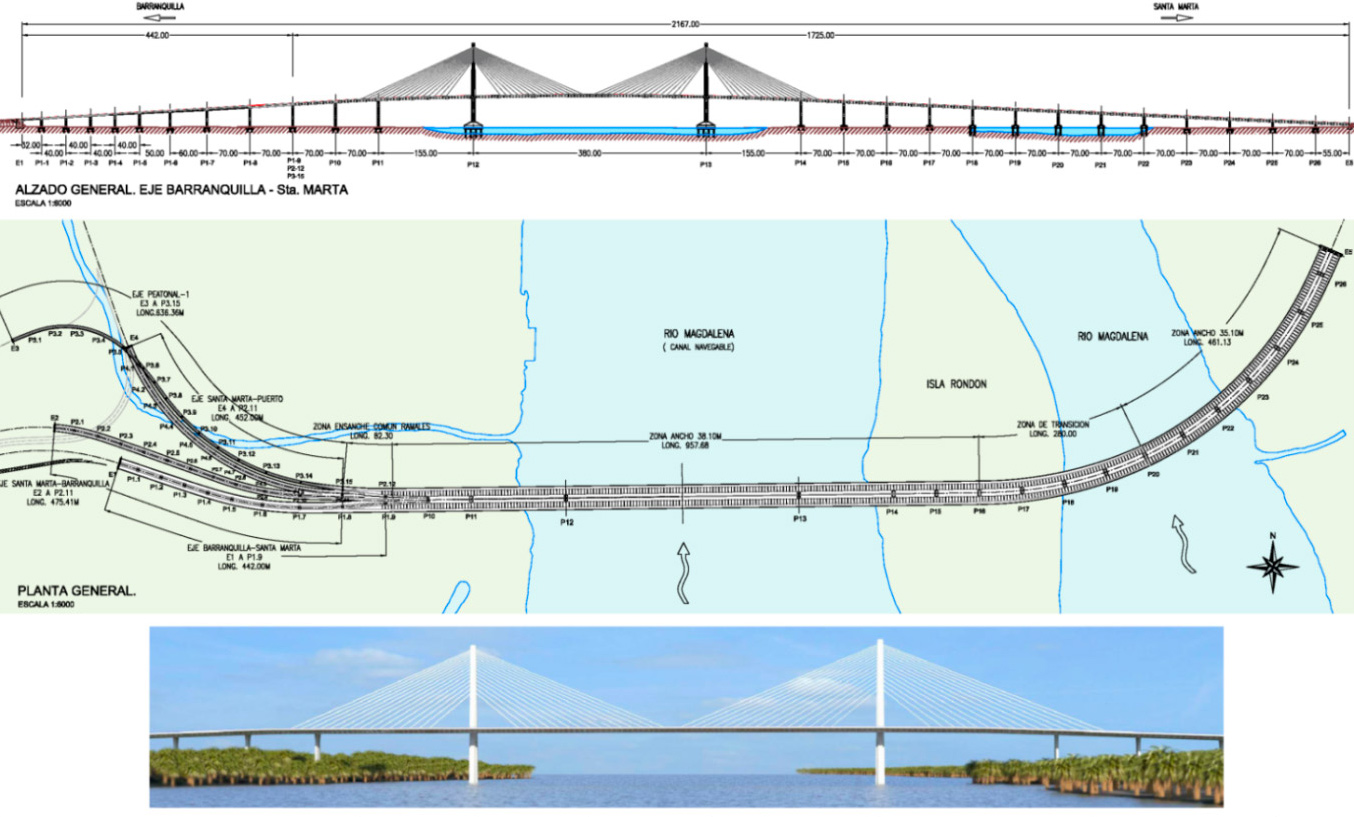
On Friday, December 20, President Iván Duque cut the ribbon to officially declare the new Pumarejo Bridge, built over the Magdalena River and connecting the departments of Atlántico and Magdalena with the rest of the Colombian Caribbean, officially open.

The Ministry of Transportation decided to designate the new infrastructure over the Magdalena River with the name of ‘Puente Pumarejo’, in gratitude to Alberto Mario Pumarejo Vengoechea, mayor of Barranquilla (1966) and main promoter of the “Laureano Gómez” bridge (known as bridge Pumarejo 1974) and projected by Morandi.

The National Institute of Roads (Invías) of the Latin American country, commissioned Sacyr Engineering and Infrastructure to build a new bridge under which ships of up to 45 meters in height could pass, which will considerably improve the connectivity of the road by being able to house freighters of large tonnage, with the consequent benefit for the local economy.
El proyecto de construcción de dicha obra (Estudios y Diseños Definitivos (Fase III)) fue desarrollado en el periodo 2012-2015 por el Consorcio Ecopuentes (JFSAS-IVICSA-Estructurador Colombia), siendo CFC responsable del desarrollo del proyecto del puente en sí. Tal como manifiesta Javier Muñoz-Rojas, Director del Proyecto: “El proyecto fue sin duda una experiencia muy interesante y singular. Las dimensiones de la obra -longitud, anchura, luz del vano central… – eran los mayores que se habían abordado en Colombia hasta la fecha. Esto llevó a que después de un exhaustivo estudio de alternativas propusiéramos soluciones y procedimientos de construcción novedosos e industrializados no habituales en el país con el objetivo de poder realizar la obra en el plazo requerido por la Administración. Esto no estuvo exento de las lógicas complicaciones pero acabó contando con el apoyo entusiasta de los técnicos del Invias y de la Interventoría. Tenemos que reconocer que el no haber podido participar posteriormente durante la fase de construcción -por circunstancias que no vienen al caso- nos ha dejado un cierto sabor amargo, no obstante nos alegra que los ajustes al diseño original introducidos durante la construcción no han alterado sustancialmente la configuración prevista y que la obra presenta una imagen singular y espectacular como todos esperábamos.”
The construction project (Definitive Studies and Designs (Phase III)) was developed in the period 2012-2015 by the Ecopuentes Consortium (JFSAS-IVICSA-Structure Colombia), being CFC responsible for the development of the bridge project itself. As stated by Javier Muñoz-Rojas, Project Director: “The project was undoubtedly a very interesting and unique experience. The dimensions of the work -length, width, span of the central span … – were the largest that had been addressed in Colombia to date. This led us, after an exhaustive study of alternatives, to propose innovative and industrialized construction solutions and procedures not usual in the country with the aim of being able to carry out the work in the time required by the Administration. This was not without its logical complications, but it ended up with the enthusiastic support of Invias and Interventoría technicians. We have to admit that not having been able to participate later during the construction phase – due to circumstances that are not relevant – has left us with a certain bitter taste, however we are glad that the adjustments to the original design introduced during construction have not substantially altered the planned configuration and that the work presents a singular and spectacular image as we all expected. ”
INVIAS awarded the construction, for an amount of about 223 million euros, to the consortium led by the Spanish construction company SACYR that has carried it out in the 2015-2019 period.
The bridge is considered one of the most representative in the country, being the longest bridge in Colombia with 2.28 kilometers. Of the cable-stayed type in the central section, it has a 380-meter span between the 80-meter-high pylons. The accesses have a drawer section board with lateral flights supported on props; the vehicular section has three lanes, a pedestrian zone (2 m) and a bicycle lane (1.50m) at both ends of the section; the width of the deck is 38.1 m in the cable-stayed section and 35.1 m in the access sections and the clearance for the passage of ships is 45 meters.

Photos courtesy of Sacyr.



